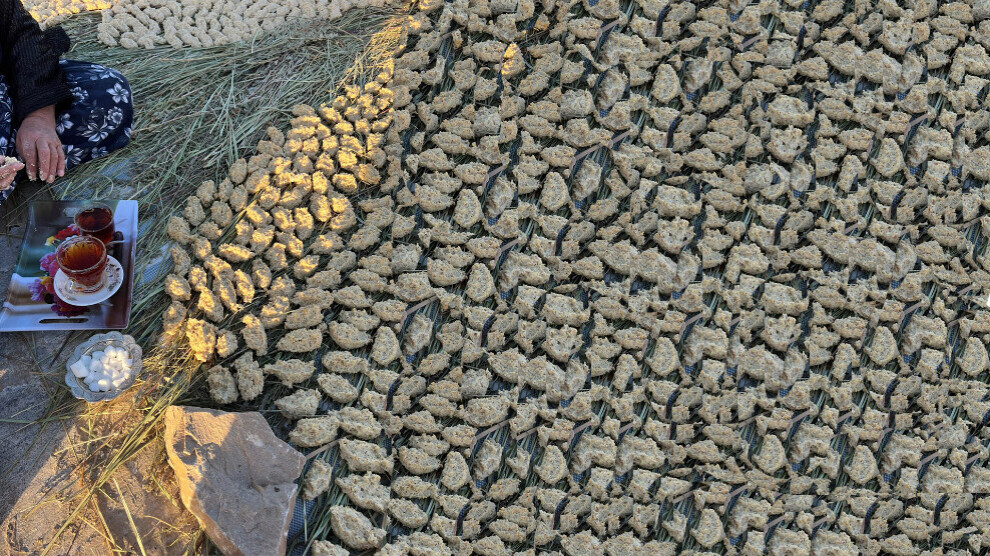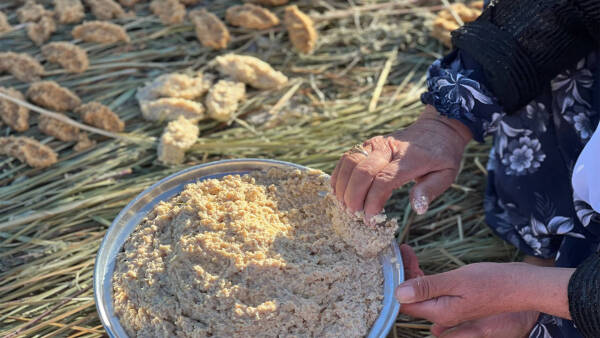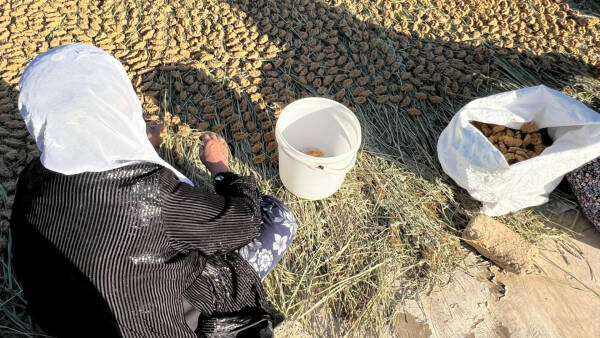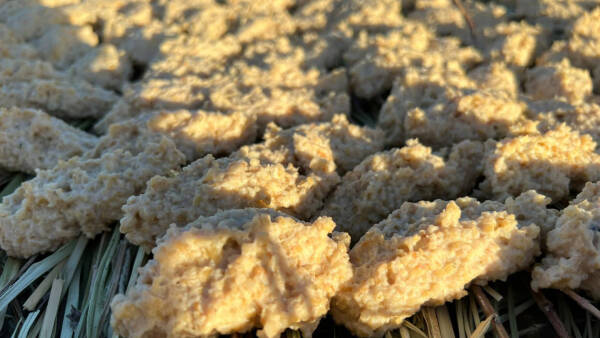The Healing Flavor Passed Down Through Generations by Kurdish Women: Tarhana
At the foothills of the mountains in Eastern Kurdistan, there is a tradition that Kurdish women have upheld for generations to withstand the harsh winter: Tarhana. This ancient delicacy continues to warm both tables and spirits on cold winter days.

Shahla Ahmedi
Ravansar – The harsh winter conditions of Eastern Kurdistan have shaped the lifestyle of the region’s people for centuries. Kurdish women, in particular, stand out for the traditional methods they have developed to withstand this severe season. In the autumn months, as preparation for the coming winter, women begin producing both Tarhana and Kaşak. Each spoonful of these foods, crafted through days of effort, is not only nourishing but also loaded with meanings that reflect the identity, history, and philosophy of a people. These traditional flavors leave traces not just on the palate but also in collective memory.
Tarhana, a traditional winter food passed down from generation to generation for centuries, is considered more than just a soup; it is seen as a cultural heritage. Tarhana is still carefully prepared in households across the region. Its aroma evokes old stoves, the winter preparations that began before the first snow, and the hardworking hands of the women involved in those preparations. Prepared with natural ingredients and through a process that takes several days, Tarhana not only becomes indispensable on winter tables but also carries the cultural memory of a people who have learned to live in harmony with nature. Meanwhile, Kaşak, with its whiteness symbolizing winter mornings, is served with warm bread, bringing family members together around simple yet heartfelt meals. In this sense, it is not just a breakfast item but a cultural element that nurtures togetherness and sharing.
Tarhana is made together in the communal work areas of the villages
In a village in Eastern Kurdistan, 70-year-old Şavkat, who carefully places evenly sized tarhana's on her roof to dry, has been keeping this tradition alive for years. Şavkat, who learned this ancient knowledge from her mother and now passes it on to her family, said, “My mother first taught me how to make tarkhineh. I was only ten years old back then, still a child, but I learned over time. I remember my mother preparing tarkhineh every year. Back then, there wasn’t the abundance we have now; food was scarce. That’s why my mother made a lot of tarhana. Now, I have shown my family how to make this food. I taught them all the steps. At the end of summer, they come to the village to make tarhana for their winter consumption.”

Tehran in partnership with wheat, sun and women
Explaining the preparation process of Tarhana, Şavkat said, “First, we cook the wheat and dry it in the sun, then turn it into bulgur and leave it in sour milk for ten days. After this period, we spread the mixture on the roof; we usually put thyme or fresh herbs on top, which enhances both the aroma and the taste. Two days in the sun is enough; if it stays longer, it dries too much and crumbles. No one can do this alone; women in the village always help each other. There is also another method called Borani tarkhineh; for that, we cook the bulgur in a pressure cooker for a few hours, then turn it into dough and make small balls. Optionally, we add coriander or thyme. We dry the balls and bake them in special ovens; these, too, are stored for winter. Generally, making tarkhineh is a laborious and time-consuming task. Women in Eastern Kurdistan villages endure this effort every year to ensure that their families have warm and nourishing food during the cold winter.”

healing of winter
Şavkat also mentioned that Tarhan's is usually cooked as a soup or stew on cold winter days: “Traditionally, thanks to its natural ingredients, it is believed to act like an antibiotic. It is especially considered effective against sore throats and colds. When we are sick, we cook it with chili and garlic; it really works better than medicine. Cooking it is quite easy: we put a few pieces of tarhana's into water, add some onions, and optionally beans or other vegetables. Then we boil it until it fully dissolves.”

Shenu, who comes to the village when Tarhana season arrives, said, “I always return to the village at this time of year. I learn how to make Tarhana from my mother and grandmother; I love local dishes. Tarhana is not just food for me; sometimes we even eat it as a snack. Today, although there are many fancy dishes on tables, tarhana still holds its place. In each piece, I see the effort of Kurdish mothers and grandmothers who, tirelessly and lovingly, pass down this tradition from generation to generation.”
